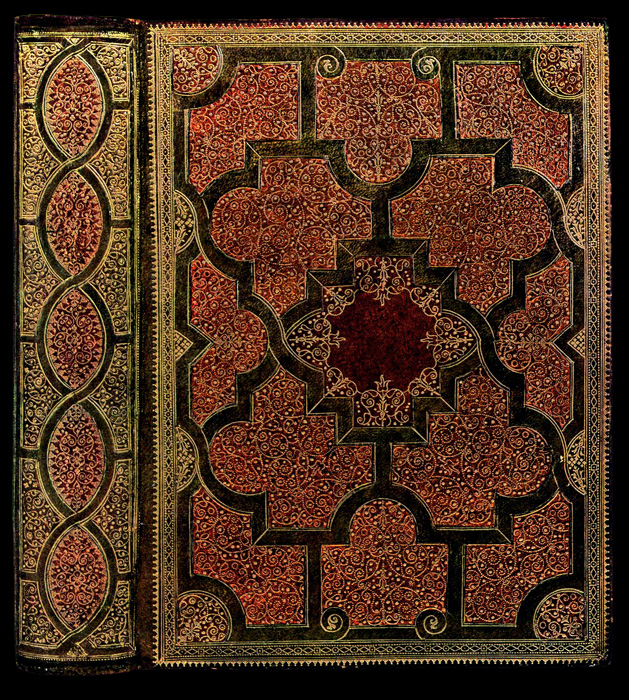

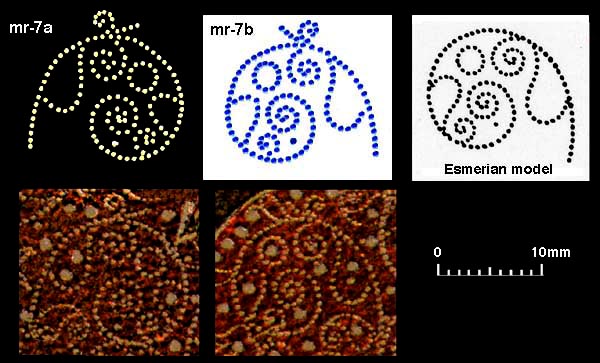
|
In Comparative Diagram 1, I have selected two reasonably clear imprints from Raphaël Esmerian's example No.4 which he attributes to Macé Ruette and has given a production date of 1622, by comparing the tools of this binding with those of a later production, such an early date seems unlikely. If we compare these actual imprints with Esmerian's imprint model of the same tool, found in his Annexe A, Tableau II - ATELIER DE MACE RUETTE environ 1606-1638, we notice some important differences. To create a model similer to the Esmerian model, I created a small bead of about the average size of an imprint segment, I then superimposed copies of the bead on every visable segment. This is an interesting exercise in as much as the bead seems to 'fit' with relative ease, missing or blurry segmentation is repairable with beads which appear to fill the gaps in the correct number. Thus I am inclined to think that there is a sort fixed distance for the seqmentation, so that the beads almost always fit into the segmentation pattern. My bead models are very close to the actual imprint, for example, we can actually count the number of segments in the inner ring.... |

| thus in Comparative Diagram 2 we can clearly see that mr-7a has only 12 segments while mr-7b probably has 13, while the Esmeriam model has 14. A closer scrutiny of the Esmerian model show that there are many more beads (segments) in the model than in the actual imprint, further to this Esmerian's model is entirely lacking the small exterior spiral with stem. He does however indicate the inner dot although it is not well positioned or proportioned. Fortunately the detail in the reproduction of this binding is quite good and we can extract good examples of most of the imprints. |
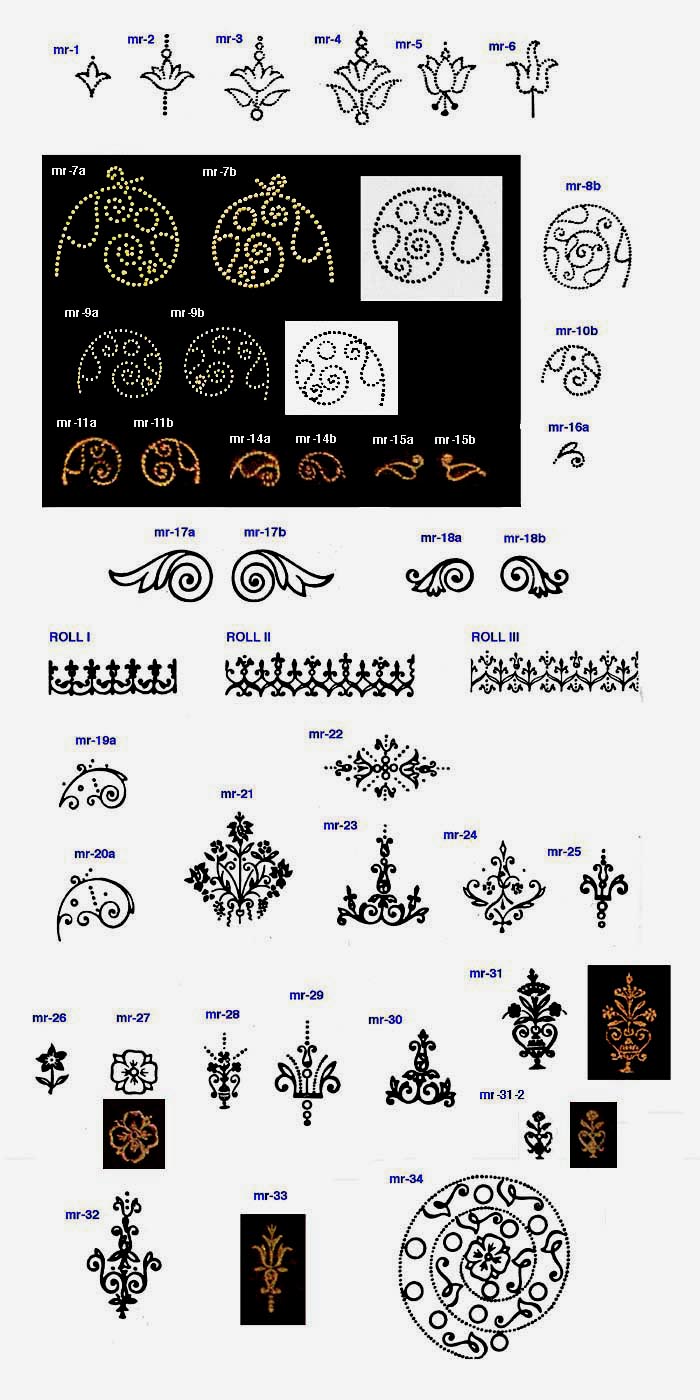
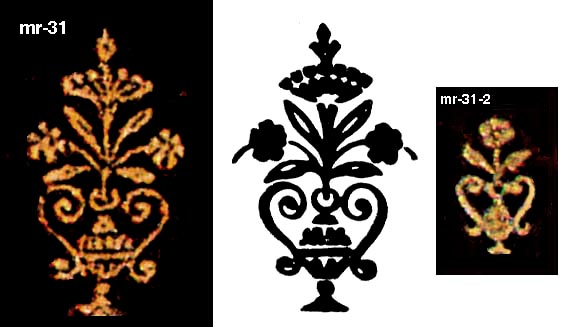
| In Comparative Diagram 4 you will note the small vase mr-31-2, I discovered this tiny vase in the elaborate tooling of the spine, and at first thought it was, the Esmerian's noted early vase mr-28, however after a closer inspection, I realized that this must be an imprint not noted by Esmerian. Esmerian does not show all the imprints, and is in fact rather selective, thus we see a number of tools used which are not on Tableau II |
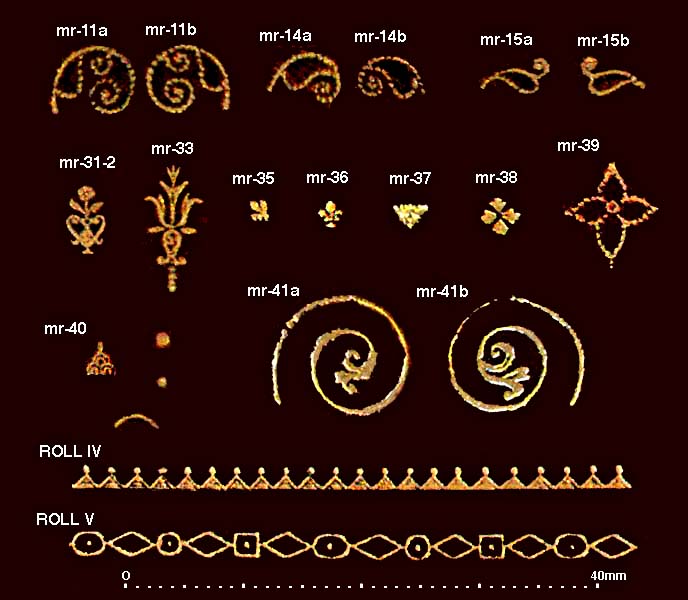
| On the next page we will examine a 1624 Macé Ruette binding, here we discover some interesting early tools and methods which suggest that, the above well developed pointillé style may have occured after 1624. |
| information about the author | return to the home page of VIRTUAL BOOKBINDING |